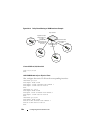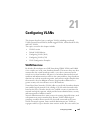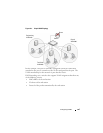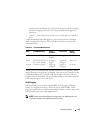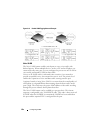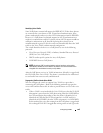
646 Configuring VLANs
priority over other traffic, such as data. Administrators also use VLANs to
protect network resources. Traffic sent by authenticated clients might be
assigned to one VLAN, while traffic sent from unauthenticated clients might
be assigned to a different VLAN that allows limited network access.
When one host in a VLAN sends a broadcast, the switch forwards traffic only
to other members of that VLAN. For traffic to go from a host in one VLAN to
a host in a different VLAN, the traffic must be forwarded by a layer 3 device,
such as a router. VLANs work across multiple switches and switch stacks, so
there is no requirement for the hosts to be located near each other to
participate in the same VLAN.
Each VLAN has a unique number, called the VLAN ID. The Dell Networking
series switches support a configurable VLAN ID range of 1–4093. A VLAN
with VLAN ID 1 is configured on the switch by default. VLAN 1 is named
default
, which cannot be changed. However, you can associate names with
any other VLANs that you create.
In a tagged frame, the VLAN is identified by the VLAN ID in the tag. In an
untagged frame, the VLAN identifier is the Port VLAN ID (PVID) specified
for the port that received the frame. For information about tagged and
untagged frames, see "VLAN Tagging" on page 649.
The Dell Networking series switches support adding individual ports and Link
Aggregation Groups (LAGs) as VLAN members.
Figure 21-1 shows an example of a network with three VLANs that are
department-based. The file server and end stations for the department are all
members of the same VLAN.
NOTE: Dell Networking series switches support VLAN routing. When you
configure VLAN routing, the switch acts as a layer 3 device and can forward traffic
between VLANs. For more information, see "What Are VLAN Routing Interfaces?"
on page 1021.







